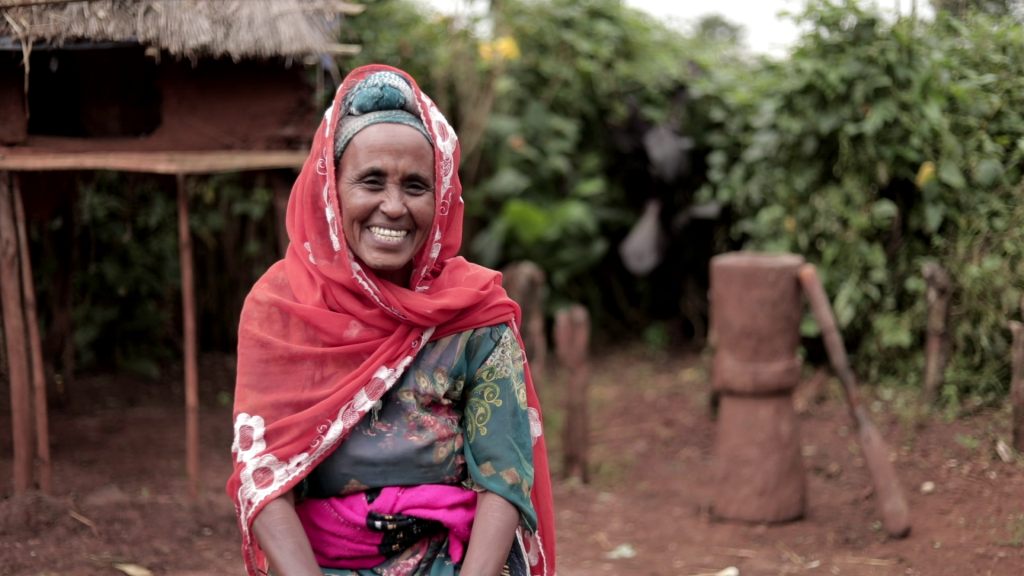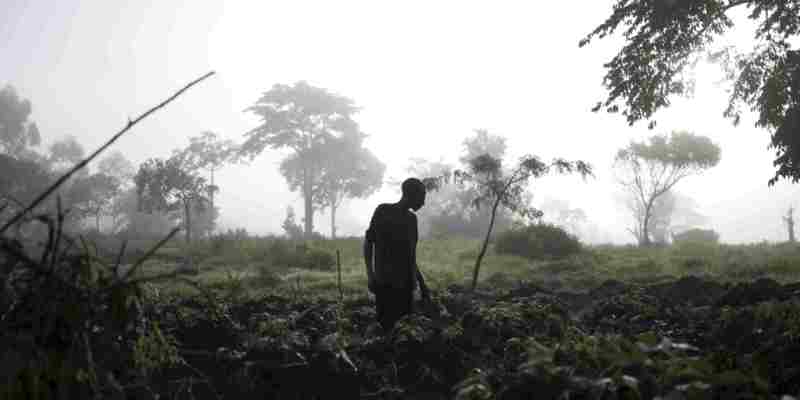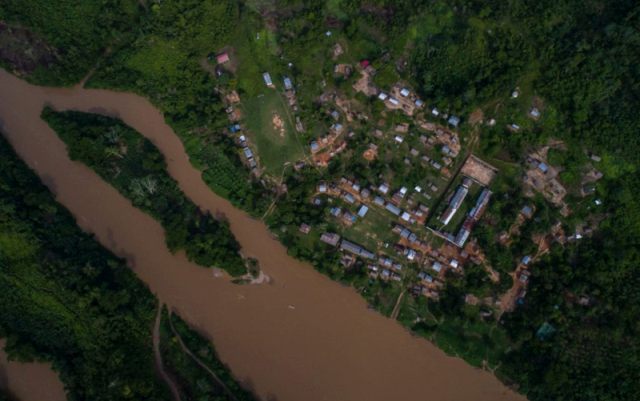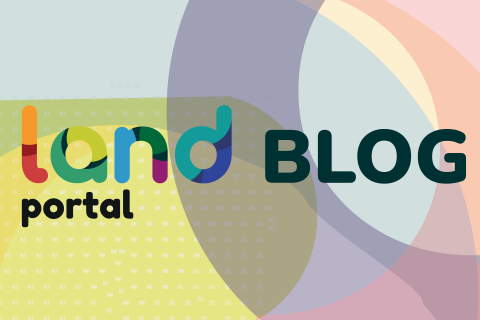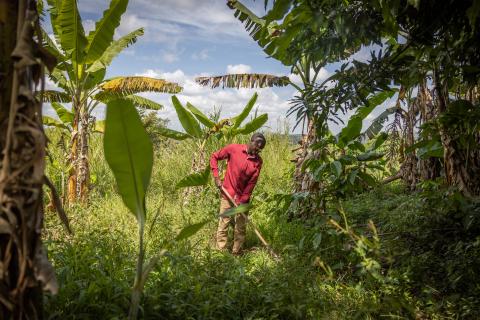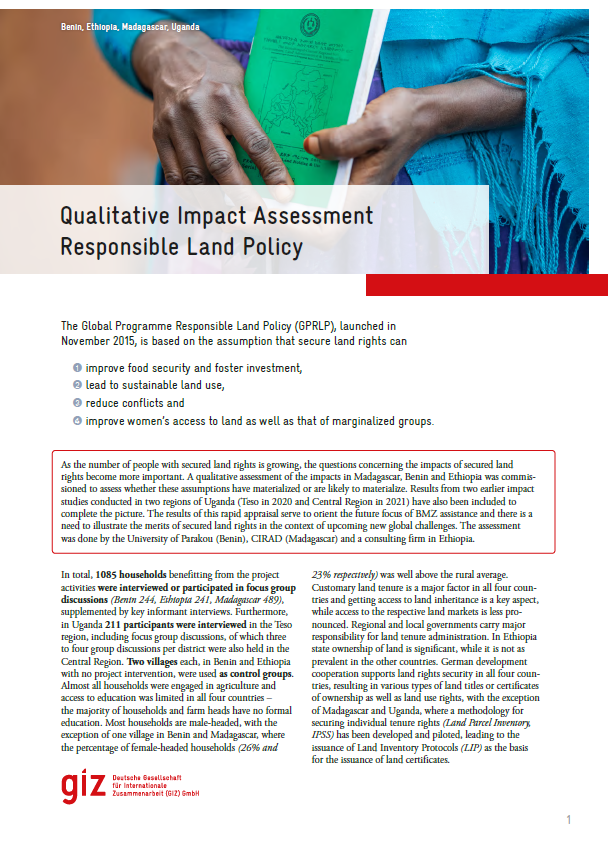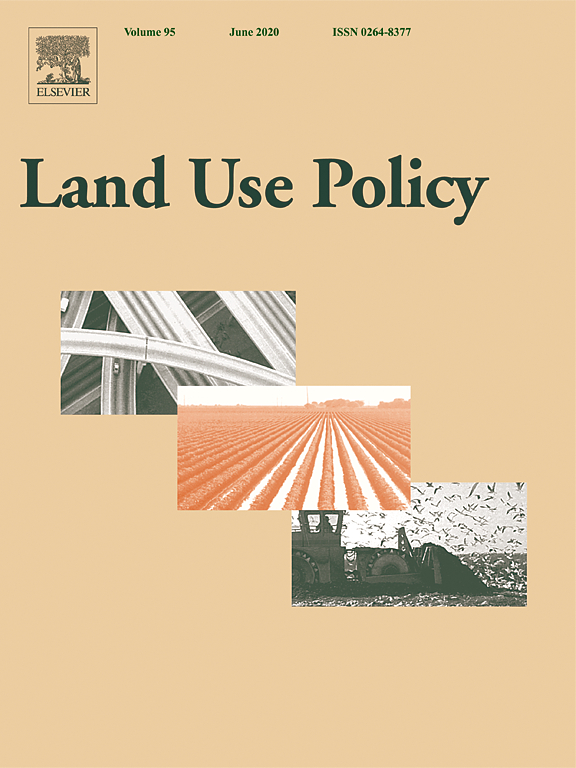The GPRLP contributes to global sustainable development goals by improving land tenure security. The project improves the land ownership and land use rights of about 2,500,000 people in the partner countries. Particular attention is paid to the rights of women and marginalised groups, such as indigenous peoples. The objective is to support people in improving their livelihoods through secure and fair access to land and in developing long-term economic prospects in rural areas. The project is currently implemented in Burkina Faso, Cameroon, Côte d’Ivoire, Ethiopia, Madagascar, Niger and Uganda (previously also in Benin, Laos, Peru and Paraguay).
The three intervention areas of the GP are:
-
Securing land rights for the rural population through improved institutional capacities and procedures.
-
Promoting the participation of civil society in responsible land policy
-
Improving the framework conditions for responsible private agricultural investment
Context
The livelihoods of large parts of the world’s population depend directly on access to land. If access is denied, the results are often hunger and underdevelopment. According to UN World Food Programme estimates, half of the 815 million people suffering from hunger in 2017 were members of smallholder families. Many landowners and land users possess only informal or traditional land rights, which are often not sufficiently recognised.
Where we stand
The global programme has already been able to strengthen the land rights of over 584.000 small farming households. Of these, more than 371.000 households (63%) have registered their land rights in the name of the woman or together as a couple. Over 60.400 households of marginalized groups have received land ownership rights (e.g. property titles, long-term leases, certificates) that are recognised by the state and traditional authorities).
Resources
Here on Landportal, the GPRLP shares its knowledge products, which come directly from the projects in the countries. These include good practices, impact stories, as well as manuals and guidebooks on topics like tenure security, dispute resolution and implementation strategies.
Our country projects, related content like news and blog posts, and resources from the global programme are all available to explore below.
The country pages linked below provide comprehensive information on the specific projects, their resources, and the results and impacts achieved to date.
More Information
To find out about the GPRLP you can read more about it here:



